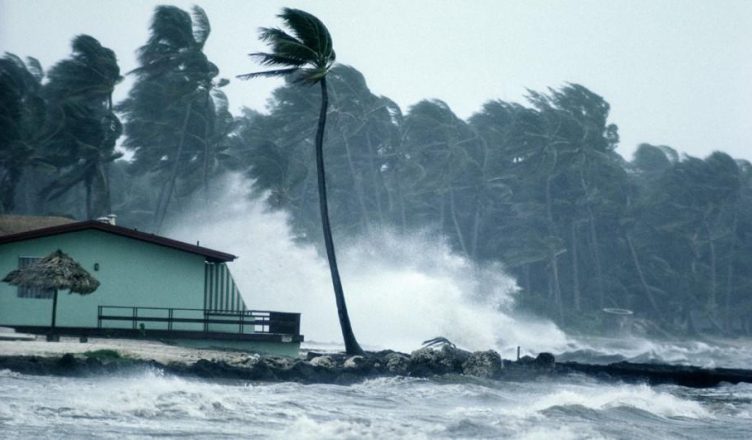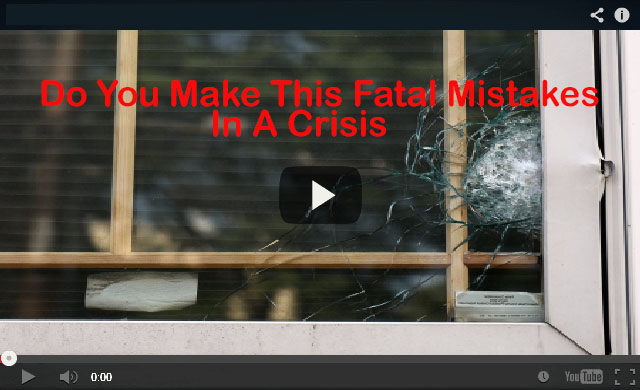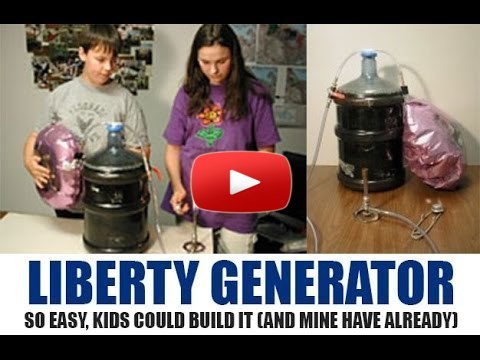Top 11 Hurricane Essentials
1. Hurricane Survival – What Are You Up Against?
To be a hurricane, the system must be producing winds of at least 74 miles per hour. Less intense storms are called tropical depressions or tropical storms.Hurricanes, like tropical storms, are individually named to aid in identifying them. Each hurricane is, essentially, an organized system made up of hundreds of individual thunderstorms.
2. The Eye of the Hurricane
The core of the hurricane is called the eye, an area of relatively benign weather several miles across surrounded by turmoil. All of the severe weather conditions produced by individual thunderstorms (heavy rain, hail, lightning, tornadoes, downbursts, etc.) are greatly magnified within the hurricane.
3. Hurricanes Can Also Generate Tidal Surges
Working together, such storms can also generate tremendous tidal surges, which can decimate coastal areas.Historically, individual hurricanes have caused the loss of thousands of lives and billions of dollars in damage as they ran their course over populated areas.
Remember: Hurricanes are among the most destructive phenomena of nature.
Their appearance is not to be taken lightly.
4. Have a Hurricane Survival Plan
A high wind in itself is not the principal danger. It is rather the fact that a hurricane blows around debris, shreds buildings and turns objects into missiles. These storm systems are usually accompanied by heavy rain, hail, and thunderstorms. Before this occurs, have a plan for survival.
5. Do You Have A Basement?
The safest place to be during any hurricane (or high wind storm) is a basement, away from windows, in the middle room or closet of the house and under a heavy piece of furniture (in case of a roof or wall collapse).
6. Invest in a NOAA Weather Radio
Invest in a National Oceanic and Atmospheric Administration (NOAA) weather radio. An AM/FM with weather alerts from the NOAA will help you keep track of what is going on. These broadcasts are sent out via VHF radio waves, so any receiver that can pick up such broadcasts will do. This Kaito emergency radio has 5 power sources including AA battery, internal battery (which you can charge with an AC adaptor), hand crank, solar, and even USB/Dynamo. With so many options for keeping it powered, this radio or one with similar capabilities is highly recommended.
7. No Basement? Shelter in the Inner-Most Closet or Bathroom (without Windows)
If you do not have a basement, go to the inner-most closet or bathroom without windows and hide under heavy furniture. Some companies manufacture prefabricated shelters that you drop into a hole in the ground; they are havens against heavy winds.
8. Stay Tuned in to Weather Alerts — that Weather Radio is Your Warning System
During a hurricane, listen to the news to determine which type of hurricane is coming your way so you will know if you should stay home and endure the storm or go to a safe shelter.
9. Hurricanes Can Cause Tornadoes
Tornadoes can be caused by hurricanes; it might be a good idea to read our extra section on tornadoes as well. Quickly, here are some warnings of an impending tornado:
Signs of an Impending Tornado
*A swampy-greenish to greenish-black color to the sky.*A sharp, fresh smell in the air that seems unusual.
*If there is a watch or warning posted and you see hail.
*An eerie moment of silence after a thunderstorm.
*Clouds that speed by quickly or in a rotating motion.
*A sound that first sounds like a waterfall and gets louder like a train.
*Debris dropping from the sky.
*A funnel cloud or debris rotating in a funnel pattern.
If you see a tornado that does not appear to be moving to the right or to the left when viewed in relation to the trees and power poles in the distance, it could be headed straight for you.
With a hurricane, you have the luxury of time to prepare in comparison to a tornado.
The conditions for a hurricane are usually spotted days before one actually develops. The sky looks similar to that of a tornado, with the greenish cast that is almost black. There is an eerie calm before the storm; then it hits a wide area for awhile.
Inside the Eye of the Hurricane, as it Passes Over You
If the eye of the hurricane passes over you, you’ll hear an eerie silence once again, so don’t be fooled and think it is over. That quickly passes and the winds whip again.
10. As Soon As Possible, Determine if You Should Shelter in Place or Evacuate
If you know a hurricane is coming your way, examine the home you live in and listen to news reports so that you can understand the ferocity of the coming storm. That way, you will know if you should either stay or leave for a shelter.
If you stay at home, make sure you have sturdy shutters securely locked to keep your windows (as well as everyone in the house) safe. If you do not have shutters, use heavy plywood and nail it to the window frame. Have your emergency kit handy and alternative lighting ready.
Listen to the battery operated radio or NOAA radio so you can hear what is really going on outside and when it is safe to leave the house.
If you are in a car and spot evidence of oncoming bad winds, leave your car and take shelter in the nearest building or in a ditch. Do not hide in an overpass. A strong tornado could have the heavy steel and concrete on you in an instant.
11. Invest in a Small Generator and Extra Fuel
It might also be a good idea to invest in a small generator, a small gas-powered motor that can produce small amounts of electricity, providing you with essentials for a few hours at a stretch if power lines are down after the storm.Get one before the hurricane hits: if you wait till the storm has come and gone, you’ll be looking for a generator along with everyone else. They’re likely to be sold out early. In that case, expect very long lines and seeing empty shelves where generators used to sit in your local hardware store.
11 Key Hurricane Survival Supplies
Top Ten Things to Know About Hurricanes 1) Family survival plan (how, where and when will your family meet to take shelter as hurricane warnings are broadcast?)
2) Plywood, nails (to board up windows prior to the hurricane, and also to board up damaged roofs or collapsed walls following any high winds)
3) Bottled water and secondary supplies of emergency water stored in your vehicle, in case the hurricane destroys a portion of your home where your bottled water was stored (it is wise to have more than one location to store both emergency food and water).
4) Non-perishable food (if shelf life is a concern, you can either store your own food for long term storage and get a shelf life of several years, or purchase freeze dried food in bulk from a major supplier like Wise Company, Mountain House, etc.)
5) Emergency lighting (Coleman’s “Quad” LED Lantern separates into four smaller hand held lights; a useful tool if you have children or others in the home with you).
6) Backup batteries (because this is a disaster you are preparing for, supply yourself with large packs of D-size batteries that come in a dozen or even 2 dozen; if you have a weather radio and flashlights, also supply yourself with a “mega pack” of 100 AA or AAA batteries, depending on your needs). Why so many batteries? The worst hurricanes can knock out power for several days and possibly several weeks in some areas.
7) Inflatable life raft, oars, and manual pump (if low land flooding from tidal surges, etc. is a threat in your specific area)
h) Rope
8) Tarp (both large and smaller tarps; if a wall comes down or a roof collapses, you can use rope and tarp to quickly make temporary repairs — once the winds have died down)
9) First aid kit, medicines, etc.
10) Propane camp stove, back-up propane canisters (in case of power outage); for a long term disaster, for the worst of hurricanes, have a secondary wood burning camp stove on hand; we recommend Solo Stove; Solo Stove is a small, compact and light weight stainless steel camp stove that has a unique design, allowing it to create a lot of heat with very little smoke from just a few small sticks, cardboard, newspaper, etc. You do not need to have firewood on hand to use it. If you do have firewood, you will need to chop it down into very small pieces (which will make your firewood go a very long ways).
11) Two-way radios (to communicate with nearby family, neighbors, any elderly on your watch; Midland, Uniden, Cobra, and Motorola all sell good two-way radios).
Live in a Trailer or Mobile Home? Flee the Area Hours Beforehand
If you live in a trailer and there is an impending threat of a hurricane or tornado, leave the area immediately. You have no protection against such winds. The metal can literally rip to pieces around you; the shrapnel becomes a deadly weapon. If you are in a trailer park, see if there is any way to get to a storm shelter for such occasions, or at least a ditch.The very best option is to leave a trailer hours beforehand. If a hurricane is coming, just go to a shelter during the storm. Relax and read a book, play a game, or talk to whomever is around you.
Again, listen to the news for instructions. It may be advisable for everyone to evacuate the area. If that’s the case, take your emergency kit. You may not be going home for awhile.
Live on a Boat? Secure Your Boat, Evacuate
Many who live or vacation on a boat have also considered staying with the docked vessel through a hurricane. It is a poor idea. The hurricane is going to be at its most powerful as it first hits land, meaning it is going to be hitting your little boat and ramming it into the dock with everything its got. Secure the vessel as best you can, and go inland away from the storm.
Be Prepared for Extended Power Outage
Understand that the power could go out for hours or days. Have the emergency kit handy for anything that could happen. After the winds have settled, be mindful of dangerous situations such as downed power lines, broken gas pipes or neighbors in need of assistance. Help where you can – but call authorities if a problem is simply beyond your abilities.
Top Ten Things to Know About Hurricanes
1.) Hurricanes are rated by wind speeds in categories:Category 1 = 74-95mph
Category 2 = 96-110mph
Category 3 = 111-130mph
Category 4 = 131-155mph
Category 5 = 156+ mph
A sharp and constant reader of our site will notice that these categories are similar to the ones we’ve sighted for tornadoes. There are differences, however. Firstly, hurricanes cannot reach the speeds of the largest twisters, which can reach wind speeds of about 320 mph; but one must remember that hurricanes offer the perfect breeding ground for twisters. A good rule of thumb: if you’re watching for or living through a hurricane, you are under threat of experiencing a tornado.
It would be an excellent idea to read our article on tornadoes as well.
The second difference is one we’ve already stated: the heavy winds of a hurricane, while perhaps not quite as immediately powerful as the biggest twisters, can remain on the ground for quite some time, attacking with constant force.
Hurricanes Constancy Can Prove to Be Deadly
The hurricane’s constancy provides its own form of deadliness. Keep that in mind as you prepare against it.2.) Determine the level of risk for hurricane impact where you live. Make plans to evacuate if and when the order is given, and know where to go.
3.) Make a family disaster plan for hurricane preparedness and practice your plan as a family.
4.) Prepare 72 hour emergency kits for each family member including pets. Check batteries and replace water and packaged food every six months. Take these with you when you shelter, at home or at a public shelter.
Has a Hurricane Watch Been Posted?
5.) If a hurricane watch is posted for your area, it only means there is a probability a hurricane will reach your area, and you should prepare as if it were coming at you. A hurricane warning however means it is coming upon you and you need shelter immediately.Hurricane watches give 36 hours to prepare, and hurricane warnings give 24 hours to prepare.
6.) Know and post the TV and radio stations that broadcast official emergency and weather information.
7.) Review your sheltering options. Special needs should check with their home health care agencies and register with the Emergency Management Office in their county.
8.) Know the locations of public shelters and evacuation centers. Find out their rules, and decide on the items to take with you. Alcoholic beverages, drugs, weapons and smoking is not permitted in public shelters/evacuation centers. Find out about pets.
9.) Wait for the official “all clear” to be issued from the emergency management authorities before returning home.
10.) When re-entry is allowed into damaged areas, be sure to have verification of your home address. Non-residents should refrain from “sight-seeing,” which slows down emergency personnel. Also beware of hazards such as downed lines, gas leaks, and sharp objects. Help your friends and neighbors. Get training in emergency response and volunteer.
Planning for a Hurricane
We urge you to plan now what you and your family will do if a hurricane should threaten to strike your area. If you consider the alternatives, you’ll see it’s best to review the checklist before disaster strikes.
Securing Your Home for a Hurricane
You don’t need to experience the fury of a killer storm to learn one of its most valuable lessons: Covering doors and windows with Gulfstream Shutters and Panels and securing roof trusses should be a priority when preparing for a hurricane. The reason is simple: Houses are designed as closed systems, and being shut tight is how they best withstand wind pressure. If flying debris busts a window or fierce winds kick in a door, the winds rushing inside will push the roof, trying to lift it, while the winds on the outside will create a suction.A bad combination.
Plan A: STAY HOME
If you plan to stay home, make sure it can withstand a hurricane. A house or apartment building that meets current building codes, if kept in good condition and not located in a flood area, could be safe during a hurricane, provided you make the necessary preparations. A mobile home, however, is not safe in hurricane conditions, no matter how securely it is affixed to the ground.
Plan B: STAY WITH LOCAL FRIENDS OR RELATIVES
If you expect to stay at someone else’s home during the next hurricane, arrange it in advance. You will want to be sure their home will be adequately prepared and supplied. Have an alternate plan ready in case a hurricane comes when the other folks are out of town.
Plan C: RELOCATE OUTSIDE THE THREATENED AREA
If you intend to travel a few hundred miles to get out of the threatened area, use a current road map to plan the route – but stay clear of major bodies of water. If you have ill or disabled persons in your home, get a doctor’s advice on where they should stay if a hurricane hits. If you relocate, do it early so you will avoid traffic jams and dangerous winds.
Plan D: GO TO A RED CROSS SHELTER
If you do not use plan A, B or C, Red Cross emergency shelters will be available in assigned locations. The opening of such shelters will be announced on radio and television. If you plan to go to a shelter, be sure to leave as soon as the shelter’s opening is announced, and bring along your irreplaceable documents and bedding. Remember a shelter is a last resort, so comforts must be sacrificed.
10 of the Nation’s 30 Worst Hurricanes Have Struck Texas
This last segment is from a web page found on the Texas A&M agricultural news website: Surviving Hurricane Season; Because Texas has been struck by so many destructive hurricanes over the last few decades, consider what Texans are advised here, when preparing for hurricane season, or simply a hurricane warning.
The state of Texas has endured 10 of the nation’s 30 worst hurricanes since the 1900 storm that devastated Galveston Island, and thousands are living in high-risk areas with little knowledge of how to survive if the worst happens.In addition to a disaster supplies kit, Fonseca said families should develop a preparedness plan.
“The plan needs to be known to all family members,” she said. “The basic preparedness plan has four steps. Do your homework, create a family plan, make a checklist and update it periodically, and practice and maintain what you have learned.”
What Are the Emergency Response Plans for Employer, Day Care, School?
“Find out about the emergency response plan for your workplace, your children’s school or daycare, and any other place your family spends a great deal of time,” she said. “It is also smart to find out about animal care in certain places, since pets may not be allowed in shelters because of health regulations.”Next, Fonseca said [it’s important to] to discuss with your family the need to prepare for disaster. Explain the danger of severe weather to children and form a plan with responsibilities for everyone on the “team.”
“Establish meeting areas inside and outside your home, and make sure everyone knows when and where to contact each other if separated,” says Fonseca. “Families should also decide on escape routes out of their home, and what to do if advised to evacuate.”
Third, make a checklist of important emergency aid and update it periodically.
“Post emergency telephone numbers, and make sure the children know how to use them. It is also a good idea to teach everyone how to use a fire extinguisher, turn off the main valves in the house and how to perform basic first aid.”
Finally, Fonseca said [people and families should] practice and maintain the plan. Test children’s knowledge every six months to help them remember, conduct emergency drills, and check smoke detectors monthly.
Meet With Neighbors, Make Plans for Hurricane Recovery
“It is also smart to meet with neighbors and plan how the neighborhood can work together after a disaster. Consider how to help others with special needs, such as disabled and elderly persons, and plan for child care in case parents can’t get home,” Fonseca said.”Your local officials will tell you when to evacuate,” she said. “During a hurricane watch, listen to your radio or television constantly. Broadcasts will give special weather updates, warning messages, and evacuation information.”
When the time comes to evacuate, go as far inland as possible. Use evacuation routes shown on maps, or follow blue hurricane evacuation signs along roads. It is also wise to have a pre-planned place to stay, such as the inland home of a relative of friend.
For answers to specific questions concerning hurricanes and preparing for them, contact your local Emergency Management Office.
Conclusion
Surviving a hurricane comes down to preparation and planning. Have the tools and lumber on hand to board up windows facing the wind; have at least several days or even several weeks of emergency food on hand for your family (stored in a safe location of your home or on your property that won’t be destroyed should a flood occur; also store several hundred gallons of drinking water so that you have plenty of water for each person in your family, and even extra water for neighbors who may not have planned ahead, who you can help in their time of need).Make plans for re-connecting with family members. Discuss scenarios where people are at work or in school or stuck elsewhere in the region when the disaster strikes.








